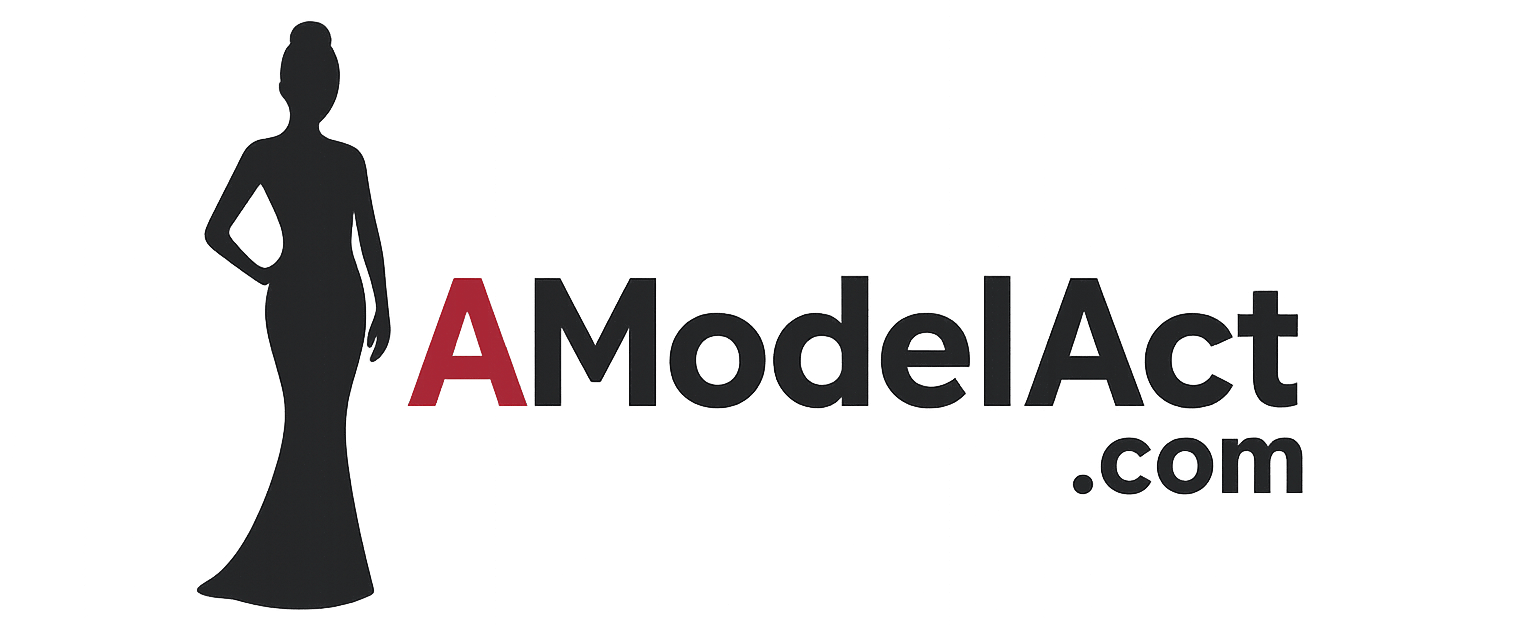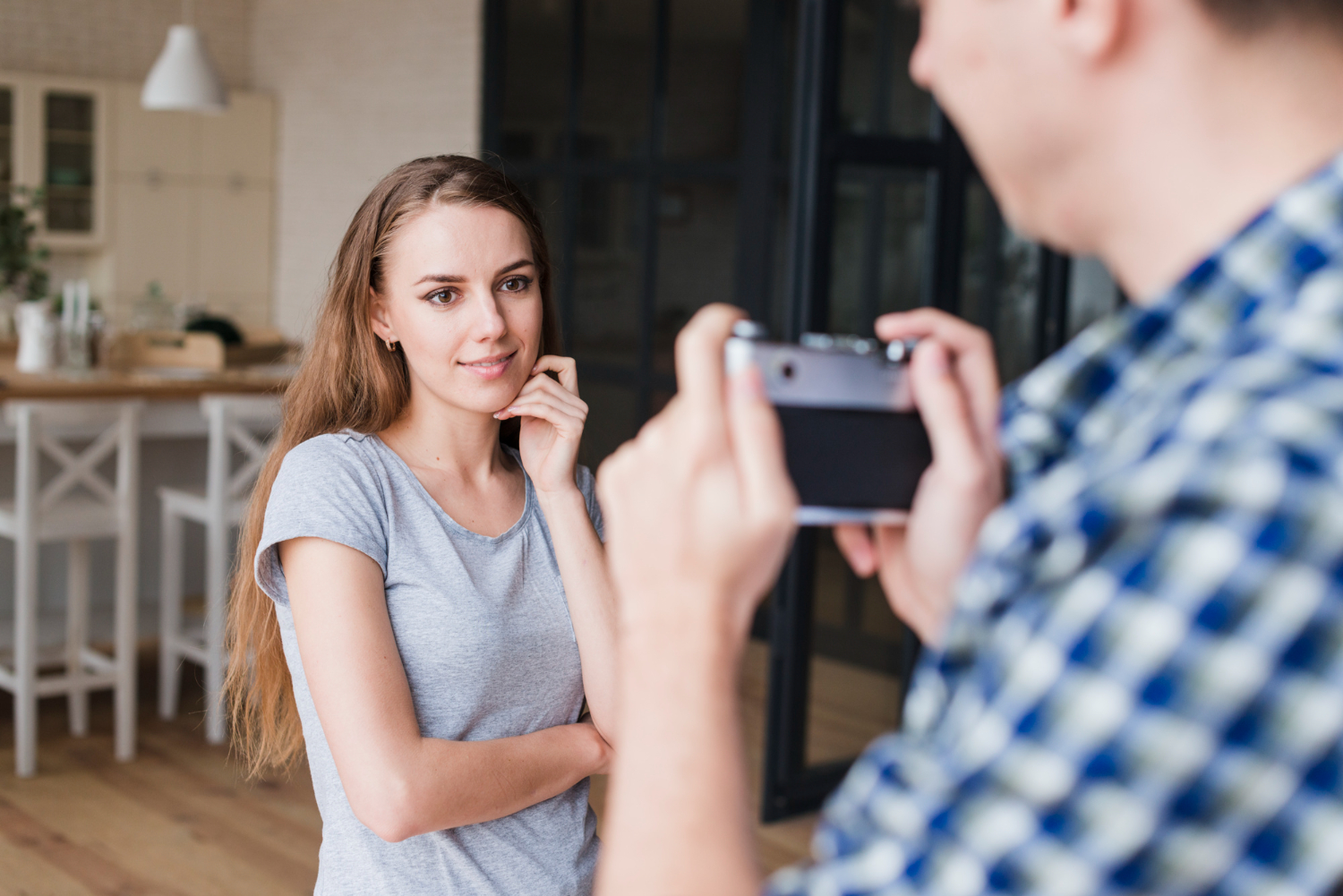Eye contact has an unspoken power that can elevate a photo from ordinary to captivating. As a model, the ability to use your eyes to connect with the viewer is one of the most critical elements of a successful shoot. Whether you’re doing editorial, commercial, or high-fashion work, the gaze you give the camera can communicate emotions, intentions, and authenticity that words can’t replicate.
Why Eye Contact Matters
In front of the lens, everything is magnified. A slight shift in gaze can alter the entire mood of an image. The importance of eye contact in photos is often underestimated by new models who focus more on body positioning and forget that their expression, especially in the eyes, is what draws people in.
When you lock eyes with the lens, you’re locking eyes with the viewer. This creates an instant emotional connection. It brings a still image to life. Your expression becomes more believable, your presence stronger, and your overall impact greater. Photographers know this, and so do clients.
Making an Emotional Connection
One of the most powerful effects of eye contact is the ability to make people feel something. A direct gaze can convey confidence, sensuality, vulnerability, or intensity depending on how it’s delivered. The importance of eye contact in photos is tied to this ability to communicate emotion without speaking.
When I’m on set, I always ask myself what the story of the photo is. Am I supposed to be mysterious, approachable, powerful, or romantic? I let that guide my gaze. I soften or harden my look, focus my pupils, or change the direction of my stare slightly. It’s subtle, but the camera picks it up.
Practicing Control Over Your Eyes
Mastering the use of eye contact requires control. It’s more than just looking at the camera; it’s about how you look at it. That includes the position of your eyelids, the tension in your brow, and even how relaxed your face is. All these elements work together to create a cohesive expression.
To develop this control, I practice in front of a mirror often. I study how different eye movements change my expression. Slight squints, a raised brow, or a distant gaze, these can all mean different things. With repetition, I’ve become more intentional about how I use my eyes during a shoot.
When to Break Eye Contact
The importance of eye contact in photos doesn’t mean that every shot requires you to stare into the lens. Sometimes the most powerful images come from looking away. A sideways glance or a look toward the floor can add mystery or tell a different kind of story.
The key is making sure your eyes still act. Even when I’m not looking directly at the camera, my eyes are still engaged. They’re focused, present, and emotionally connected to what I’m doing. That presence is what sets a good photo apart from a great one.
Tips for Capturing Effective Eye Contact
Over time, I’ve picked up some habits that help make my eye contact more effective during shoots. These are tips I always go back to, especially when I want to make sure my expressions aren’t falling flat.
Relax Your Face
Tension around your eyes can make your expression look forced. Before each shot, I release any tightness in my brow, jaw, and cheeks. A relaxed face helps the eyes communicate naturally.
Use the “Squint” Technique
A slight narrowing of the eyes, also called the “squinch”, can add intensity to your look. I use this when I want to appear confident or focused without looking aggressive.
Don’t Stare Blankly
Dead eyes are a quick way to ruin a shot. I never just “look” at the camera, I think while looking. I imagine I’m seeing a person I care about, a scene from a memory, or something that triggers an emotion.
Connect With the Photographer
Establishing trust with the photographer helps you give more authentic eye contact. When I feel comfortable, I let my guard down, and that vulnerability shows in the photos.
Practice Eye Direction
Looking slightly above or below the lens can change the feel of a shot. I experiment with this during shoots, tilting my chin or shifting my gaze to see how it changes the image.
Eye Contact in Different Types of Shoots
The way you use eye contact will vary depending on the type of modeling work you’re doing. Each genre has its own set of expectations when it comes to expressions and gaze.
Editorial
In editorial work, eye contact is often strong and intentional. The goal is to create an arresting image that makes someone stop flipping through a magazine. I tend to go for powerful, unwavering gazes that match the high-fashion aesthetic.
Commercial
Commercial modeling calls for a more approachable, relatable form of eye contact. Here, I smile with my eyes more, showing warmth and friendliness. It’s less intense and more natural.
Beauty
Beauty shots often zoom in on the face, so your eye contact needs to be flawless. Any flicker of doubt, discomfort, or blankness shows up immediately. I focus on controlling my pupils and eyelids carefully and maintaining strong emotional energy.
Runway vs. Camera
While runway doesn’t rely as much on eye contact due to its live nature, knowing how to engage with the audience, even briefly, through your gaze can enhance your presence. But when shooting for a lookbook or backstage portraits, I shift back into using eye contact as a focal tool.
The Psychological Impact
The importance of eye contact in photos goes beyond just aesthetics, it taps into human psychology. Studies have shown that people are naturally drawn to faces, and especially to eyes. When someone looks out from a photo and locks eyes with the viewer, it triggers attention and emotional engagement.
That’s why some of the most iconic images in fashion are the ones where the model’s eyes seem to follow you. They’re not just looking, they’re speaking. They evoke curiosity, admiration, or even a sense of mystery. I strive to channel that in my own work, aiming to make my gaze unforgettable.
Exercises to Improve Your Eye Contact
If you’re struggling to make your eye contact more effective, here are some exercises I use to improve my control and emotional expression.
Mirror Practice
Spend time in front of a mirror experimenting with different expressions. Try smiling only with your eyes, or looking angry or sad using just your gaze. Notice how your brows and eyelids adjust.
Photograph Yourself
Take headshots with varying eye directions and expressions. Review them to see which ones feel the strongest. This helps you identify your best angles and expressions.
Record Short Videos
Shoot short clips of yourself practicing different emotional cues through your eyes. Play them back and pay attention to which looks feel authentic versus forced.
Work With a Friend
Ask a friend to act as your photographer and provide feedback. Sometimes we don’t realize how our eyes are translating on camera until someone else points it out.
Common Mistakes to Avoid
Even experienced models fall into habits that weaken the impact of their gaze. These are some of the common mistakes I’ve learned to watch out for.
- Blank stares: Avoid looking at the camera without intention. A passive gaze can ruin the mood of the photo.
- Too much squinting: Overdoing the squint can make your eyes look closed or tense.
- Crossed eyes: Focusing too closely on the lens can sometimes lead to an awkward cross-eyed appearance. Aim just behind the lens if that helps.
- Overthinking: Trying too hard to look a certain way can kill the natural flow. Sometimes I remind myself to feel instead of pose.
Final Thoughts
The importance of eye contact in photos is more than just a technical skill, it’s an emotional one. Your eyes are a window to your personality, your confidence, and your ability to tell a story without saying a word. When you can master the art of expressing through your gaze, you become more than just a model standing in front of a camera. You become a storyteller.
I’ve learned to trust my instincts when it comes to my eyes. I let them speak for me, carry the message, and deliver a lasting impression. Whether it’s a look of quiet strength or joyful spontaneity, eye contact is my tool for connection, and in this industry, connection is everything.

